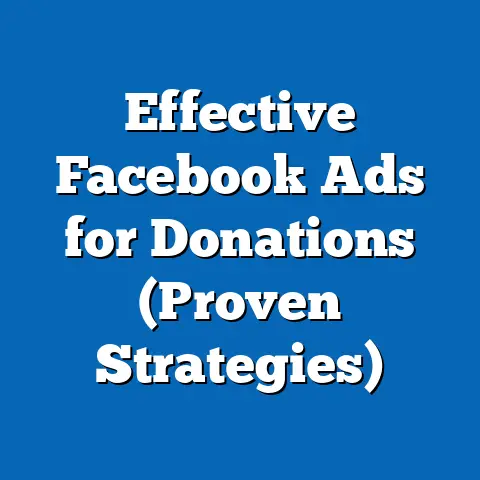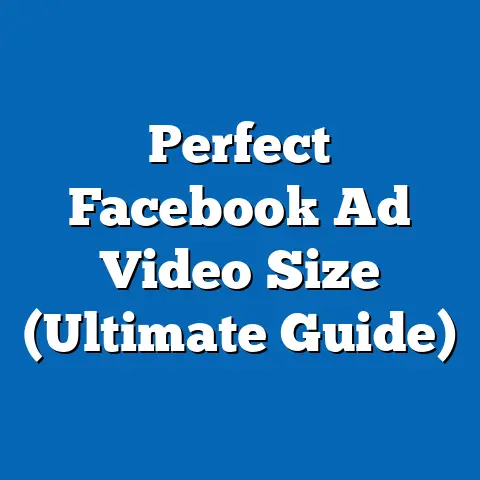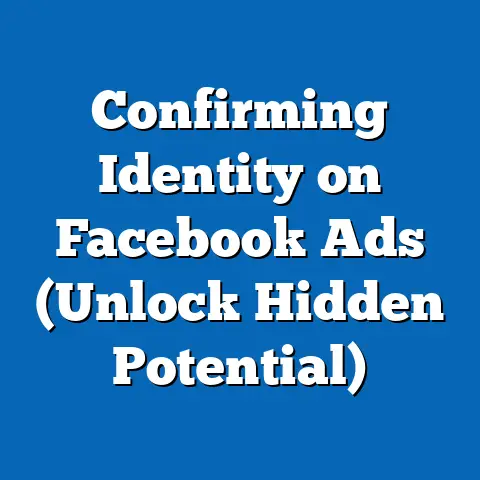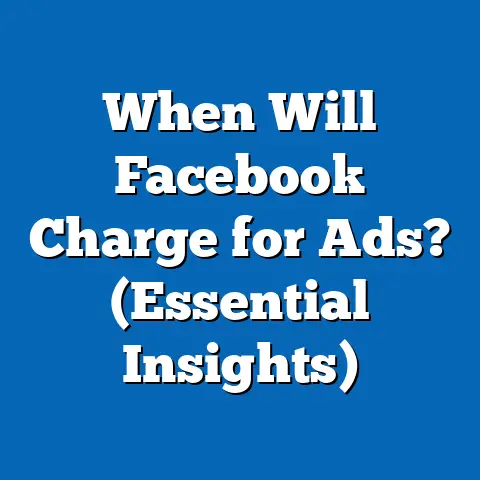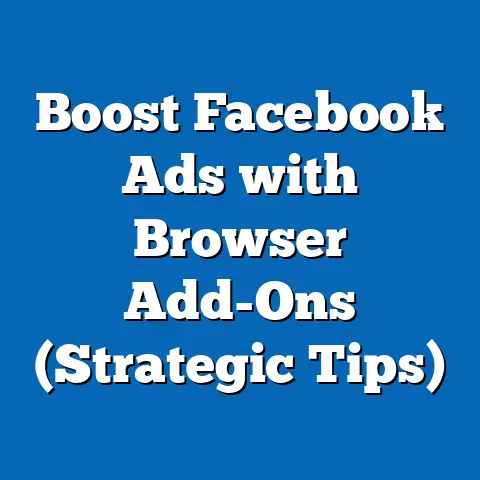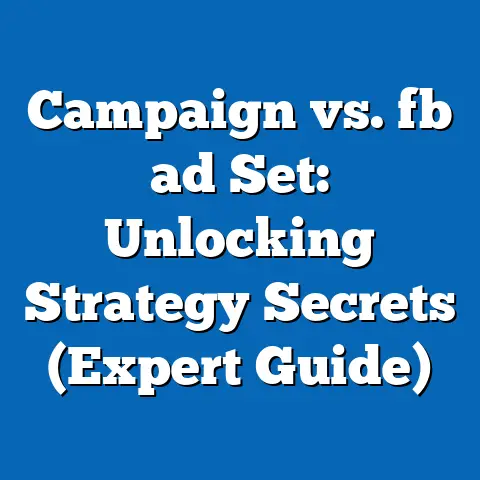How to Price Facebook Ad Design (Expert Pricing Strategies)
How to Price Facebook Ad Design: Expert Pricing Strategies
Introduction: The Art and Science of Pricing Ad Design
In today’s digital marketing world, a captivating Facebook ad can be the key to unlocking massive growth. Think about it: you’re scrolling through your feed, and what stops you? It’s not the endless stream of text updates; it’s the visually striking ad that grabs your attention. A well-designed Facebook ad isn’t just pretty; it’s a powerful tool that drives engagement, boosts brand awareness, and ultimately, converts viewers into customers.
But creating these eye-catching ads is an art. It requires a blend of creativity, technical skill, and a deep understanding of marketing principles. And like any art form, it has a value.
Now, I know what you might be thinking: “Can’t I just use a template or some automated design tool?” Sure, there are low-maintenance options out there. Tools that promise visually appealing ads with minimal effort. And for some, that might be enough. But if you’re serious about getting the most out of your Facebook advertising, you need something more. You need a design that speaks directly to your target audience, that tells a compelling story, and that stands out from the crowd. And that’s where expert Facebook ad design comes in.
Pricing your design work is a crucial aspect of running a successful business, whether you’re a freelance designer, a marketing agency, or an in-house creative team. It’s not just about covering your costs; it’s about reflecting the value you bring to the table. Set your prices too low, and you risk undervaluing your work and attracting clients who are more concerned about price than quality. Set them too high, and you might scare away potential customers who are looking for a fair deal.
Finding that sweet spot is the key, and in this article, I’m going to show you how to do just that. I’ve spent years navigating the world of Facebook advertising, both as a designer and as a marketing strategist. I’ve seen what works, what doesn’t, and how to price your services to get the best results.
Here’s what we’ll cover:
- Understanding the Value of Facebook Ad Design: Why is good design so important, and how does it impact your client’s bottom line?
- Factors Influencing Pricing: What are the key elements that determine the cost of a Facebook ad design?
- Pricing Models for Facebook Ad Design: Hourly, fixed, value-based – which one is right for you?
- Pricing Strategies for Different Types of Clients: How do you tailor your pricing to suit small businesses, startups, and large corporations?
- Tools and Resources for Pricing Facebook Ad Design: What resources can help you stay competitive and informed?
By the end of this guide, you’ll have a solid understanding of how to price your Facebook ad design services effectively, ensuring that you’re getting paid what you’re worth and delivering real value to your clients.
Section 1: Understanding the Value of Facebook Ad Design
Let’s get one thing straight: Facebook ad design isn’t just about making pretty pictures. It’s a strategic investment that can have a significant impact on your client’s marketing success. To truly understand how to price your services, you need to grasp the value you’re providing.
The Role of Facebook Ads in Business Marketing Strategies
Facebook ads are a powerhouse in the digital marketing world. With billions of active users, Facebook offers unparalleled reach and targeting capabilities. But simply throwing an ad out there and hoping for the best isn’t going to cut it. Your ads need to be strategically designed to capture attention, resonate with your target audience, and drive them to take action.
I’ve seen firsthand how a well-crafted Facebook ad can transform a struggling business. I once worked with a local bakery that was struggling to attract new customers. Their existing ads were bland and uninspired, and they weren’t seeing any results. After a design overhaul, featuring mouth-watering images of their pastries and a clear call to action, their ad engagement skyrocketed, and they saw a noticeable increase in foot traffic.
The key is to understand that Facebook ads are more than just advertisements; they’re opportunities to tell a story, build a brand, and connect with potential customers on a personal level.
The Impact of Design on Ad Performance
Think about your own experience scrolling through Facebook. What makes you stop and click on an ad? More often than not, it’s the visual appeal. A captivating image or video, combined with compelling copy, is what grabs your attention and makes you want to learn more.
Here’s how good design can impact ad performance:
- Higher Engagement Rates: Well-designed ads are more likely to catch the eye and encourage users to like, comment, and share.
- Increased Click-Through Rates (CTR): A visually appealing ad is more likely to entice users to click through to your website or landing page.
- Improved Conversion Rates: Once users land on your page, a clear and persuasive design can help guide them towards making a purchase or taking another desired action.
- Enhanced Brand Awareness: Consistent and professional ad design can help build brand recognition and create a positive impression in the minds of your target audience.
Case Studies and Statistics
Let’s back this up with some real-world examples and data.
- Case Study: A clothing retailer I worked with increased their click-through rate by 45% after redesigning their Facebook ads with a focus on high-quality product photography and clear, concise messaging.
- Statistics: According to a study by HubSpot, visuals are processed 60,000 times faster in the brain than text. This highlights the importance of visual design in capturing attention and conveying your message effectively.
- Expert Insight: “Design is not just what it looks like and feels like. Design is how it works.” – Steve Jobs. This quote perfectly encapsulates the essence of good Facebook ad design. It’s not just about aesthetics; it’s about creating an ad that effectively achieves its intended purpose.
Unique Challenges and Opportunities of Designing for Facebook Ads
Designing for Facebook ads comes with its own set of challenges and opportunities. You need to consider:
- Limited Space: Facebook ads have limited space for both visuals and text. You need to be concise and impactful with your design choices.
- Mobile-First Design: The majority of Facebook users access the platform on their mobile devices. Your ads need to be optimized for mobile viewing, with clear visuals and easy-to-read text.
- Ad Policies and Guidelines: Facebook has strict ad policies that you need to adhere to. Make sure your designs comply with these guidelines to avoid getting your ads disapproved.
- A/B Testing: Facebook’s ad platform offers powerful A/B testing capabilities. Use these features to experiment with different designs and see what resonates best with your target audience.
By understanding these challenges and opportunities, you can position yourself as a valuable asset to your clients. You’re not just a designer; you’re a strategic partner who can help them navigate the complexities of Facebook advertising and achieve their marketing goals.
Key Takeaway:
Understanding the value of Facebook ad design is crucial for setting your prices. Emphasize the impact of good design on engagement, conversions, and brand awareness to justify your fees.
Section 2: Factors Influencing Pricing
Now that we’ve established the value of Facebook ad design, let’s dive into the factors that influence pricing. There’s no one-size-fits-all answer to the question of how much to charge. The right price depends on a variety of factors, including the complexity of the design, your experience, market demand, and your client’s budget.
Complexity of the Design
The complexity of the design is one of the most significant factors influencing pricing. A simple ad with stock images and basic text will naturally cost less than a custom-designed ad with original graphics, animations, or video.
Here’s a breakdown of different levels of complexity:
- Basic: Simple ads with stock images, basic text, and minimal customization. These are typically used for straightforward promotions or announcements.
- Intermediate: Ads with custom graphics, more elaborate text formatting, and some level of animation or video. These are suitable for more engaging campaigns and brand storytelling.
- Advanced: Highly customized ads with original illustrations, professional video production, interactive elements, and sophisticated design techniques. These are ideal for high-impact campaigns and building a strong brand identity.
Experience and Expertise of the Designer
Your experience and expertise as a designer also play a crucial role in determining your pricing. A seasoned designer with a proven track record of success can command higher rates than a beginner who is just starting out.
Consider these factors:
- Years of Experience: How long have you been designing Facebook ads?
- Portfolio Quality: Do you have a strong portfolio showcasing your best work?
- Client Testimonials: Can you provide references from satisfied clients?
- Specialized Skills: Do you have any specialized skills, such as video editing, animation, or copywriting, that add value to your designs?
Market Demand and Competition
The law of supply and demand applies to Facebook ad design services as well. If there’s a high demand for skilled designers in your area, you can likely charge higher rates. Conversely, if there’s a lot of competition, you might need to adjust your pricing to stay competitive.
Research the market rates in your area by:
- Checking Freelance Platforms: See what other designers are charging on platforms like Upwork and Fiverr.
- Networking with Other Designers: Talk to other designers in your area to get an idea of their pricing.
- Analyzing Agency Pricing: Research the pricing of local marketing agencies that offer Facebook ad design services.
Client Budget and Project Scope
Your client’s budget and the scope of the project are also important considerations. A small business with a limited budget might not be able to afford the same level of design as a large corporation.
Before you start working on a project, it’s essential to:
- Discuss the Client’s Budget: Find out how much they’re willing to spend on ad design.
- Define the Project Scope: Determine the number of ads needed, the level of customization required, and any additional services, such as copywriting or A/B testing.
Understanding Client Needs and Objectives
To tailor your pricing strategies effectively, you need to understand your client’s needs and objectives. What are they trying to achieve with their Facebook ads? Are they looking to increase brand awareness, generate leads, or drive sales?
Ask your clients questions like:
- What are your marketing goals?
- Who is your target audience?
- What is your budget for Facebook advertising?
- What are your expectations for the ad design?
By understanding their needs and objectives, you can create a pricing proposal that aligns with their goals and provides them with the best possible value.
Examples of Varying Price Points
To illustrate how these factors can influence pricing, here are a few examples:
-
Example 1: Small Business, Basic Ad Design
- Client: Local coffee shop
- Objective: Promote a new seasonal drink
- Design Complexity: Basic (stock image, simple text)
- Estimated Price: \$50 – \$100
-
Example 2: Startup, Intermediate Ad Design
-
Client: Tech startup launching a new app
- Objective: Generate leads and drive app downloads
- Design Complexity: Intermediate (custom graphics, animated elements)
- Estimated Price: \$200 – \$500
-
Example 3: Large Corporation, Advanced Ad Design
-
Client: National retail chain promoting a new product line
- Objective: Increase brand awareness and drive sales
- Design Complexity: Advanced (original illustrations, professional video production)
- Estimated Price: \$1000+
Example 1: Small Business, Basic Ad Design
- Client: Local coffee shop
- Objective: Promote a new seasonal drink
- Design Complexity: Basic (stock image, simple text)
- Estimated Price: \$50 – \$100
-
Example 2: Startup, Intermediate Ad Design
-
Client: Tech startup launching a new app
- Objective: Generate leads and drive app downloads
- Design Complexity: Intermediate (custom graphics, animated elements)
- Estimated Price: \$200 – \$500
-
Example 3: Large Corporation, Advanced Ad Design
-
Client: National retail chain promoting a new product line
- Objective: Increase brand awareness and drive sales
- Design Complexity: Advanced (original illustrations, professional video production)
- Estimated Price: \$1000+
Example 2: Startup, Intermediate Ad Design
Client: Tech startup launching a new app
Example 3: Large Corporation, Advanced Ad Design
Client: National retail chain promoting a new product line
Key Takeaway:
Pricing your Facebook ad design services requires careful consideration of multiple factors, including design complexity, your experience, market demand, client budget, and project scope.
Section 3: Pricing Models for Facebook Ad Design
Now that we’ve covered the factors that influence pricing, let’s explore the different pricing models you can adopt. Each model has its own pros and cons, and the best choice for you will depend on your business, your clients, and the type of projects you typically work on.
Hourly Rates vs. Fixed Pricing vs. Value-Based Pricing
- Hourly Rates: Charging an hourly rate is a straightforward approach that’s often used for projects where the scope is unclear or the time required is difficult to estimate.
- Pros: You get paid for every hour you work, regardless of the project outcome.
- Cons: It can be difficult to estimate the total cost of the project upfront, which can make clients hesitant. It also puts the focus on time rather than value.
- Fixed Pricing: With fixed pricing, you agree on a set price for the entire project upfront. This provides clients with certainty and makes it easier for them to budget.
- Pros: Clients know exactly how much they’ll be paying, which can make them more likely to hire you. It also encourages you to work efficiently.
- Cons: If the project takes longer than expected, you might end up working for less than your desired hourly rate. It also requires you to accurately estimate the time and effort required for the project.
- Value-Based Pricing: Value-based pricing focuses on the value you’re providing to your client, rather than the time and effort you put into the project. This approach is often used for high-impact projects where the results are easily measurable.
- Pros: You can charge higher rates if you can demonstrate the value you’re providing to your client. It also aligns your incentives with your client’s goals.
- Cons: It can be difficult to quantify the value you’re providing, especially for projects where the results are less tangible. It also requires you to have a deep understanding of your client’s business and marketing goals.
- Pros: You get paid for every hour you work, regardless of the project outcome.
- Cons: It can be difficult to estimate the total cost of the project upfront, which can make clients hesitant. It also puts the focus on time rather than value.
- Pros: Clients know exactly how much they’ll be paying, which can make them more likely to hire you. It also encourages you to work efficiently.
- Cons: If the project takes longer than expected, you might end up working for less than your desired hourly rate. It also requires you to accurately estimate the time and effort required for the project.
- Pros: You can charge higher rates if you can demonstrate the value you’re providing to your client. It also aligns your incentives with your client’s goals.
- Cons: It can be difficult to quantify the value you’re providing, especially for projects where the results are less tangible. It also requires you to have a deep understanding of your client’s business and marketing goals.
Retainer Agreements for Ongoing Ad Design Services
Retainer agreements are a popular option for clients who need ongoing ad design services. With a retainer, you agree to provide a certain amount of work each month in exchange for a fixed fee.
- Pros: Provides you with a steady stream of income and allows you to build long-term relationships with your clients.
- Cons: Requires you to commit to providing a certain amount of work each month, which can be challenging if you have other projects or commitments.
Package Deals for Multiple Ads or Campaigns
Package deals offer clients a discount for purchasing multiple ads or campaigns. This can be a great way to attract new clients and secure larger projects.
- Pros: Can attract new clients and secure larger projects. It also allows you to streamline your workflow and work more efficiently.
- Cons: Requires you to offer a discount, which can reduce your profit margins.
Analyzing the Pros and Cons of Each Model
To help you decide which pricing model is right for you, here’s a summary of the pros and cons of each approach:
| Pricing Model | Pros | Cons |
|---|---|---|
| Hourly Rates | Get paid for every hour worked, good for unclear project scopes | Difficult to estimate total cost, focus on time not value |
| Fixed Pricing | Clients know the exact cost upfront, encourages efficiency | Can lose money if project takes longer, requires accurate estimation |
| Value-Based Pricing | Can charge higher rates, aligns incentives with client goals | Difficult to quantify value, requires deep understanding of client’s business |
| Retainer Agreements | Steady income, builds long-term relationships | Requires commitment to provide work each month |
| Package Deals | Attracts new clients, secures larger projects, streamlines workflow | Requires offering a discount, reduces profit margins |
| Pricing Model | Pros | Cons |
|---|---|---|
| Hourly Rates | Get paid for every hour worked, good for unclear project scopes | Difficult to estimate total cost, focus on time not value |
| Fixed Pricing | Clients know the exact cost upfront, encourages efficiency | Can lose money if project takes longer, requires accurate estimation |
| Value-Based Pricing | Can charge higher rates, aligns incentives with client goals | Difficult to quantify value, requires deep understanding of client’s business |
| Retainer Agreements | Steady income, builds long-term relationships | Requires commitment to provide work each month |
| Package Deals | Attracts new clients, secures larger projects, streamlines workflow | Requires offering a discount, reduces profit margins |
Examples of Calculating Prices Based on Different Models
Let’s look at some examples of how to calculate prices based on different models, incorporating real-world scenarios:
-
Example 1: Hourly Rate
- Desired Hourly Rate: \$50
- Estimated Time for Project: 10 hours
- Total Price: \$50 x 10 = \$500
-
Example 2: Fixed Pricing
-
Estimated Time for Project: 10 hours
- Desired Hourly Rate: \$50
- Markup for Profit and Overhead: 20%
- Total Price: (\$50 x 10) x 1.2 = \$600
-
Example 3: Value-Based Pricing
-
Client’s Estimated Revenue Increase from Ads: \$10,000
- Percentage of Revenue Increase to Charge: 10%
- Total Price: \$10,000 x 0.1 = \$1000
-
Example 4: Retainer Agreement
-
Estimated Monthly Work: 20 hours
- Desired Hourly Rate: \$50
- Monthly Retainer Fee: \$50 x 20 = \$1000
-
Example 5: Package Deal
-
Price per Ad: \$200
- Discount for Package of 5 Ads: 10%
- Total Price for Package: (\$200 x 5) x 0.9 = \$900
Example 1: Hourly Rate
- Desired Hourly Rate: \$50
- Estimated Time for Project: 10 hours
- Total Price: \$50 x 10 = \$500
-
Example 2: Fixed Pricing
-
Estimated Time for Project: 10 hours
- Desired Hourly Rate: \$50
- Markup for Profit and Overhead: 20%
- Total Price: (\$50 x 10) x 1.2 = \$600
-
Example 3: Value-Based Pricing
-
Client’s Estimated Revenue Increase from Ads: \$10,000
- Percentage of Revenue Increase to Charge: 10%
- Total Price: \$10,000 x 0.1 = \$1000
-
Example 4: Retainer Agreement
-
Estimated Monthly Work: 20 hours
- Desired Hourly Rate: \$50
- Monthly Retainer Fee: \$50 x 20 = \$1000
-
Example 5: Package Deal
-
Price per Ad: \$200
- Discount for Package of 5 Ads: 10%
- Total Price for Package: (\$200 x 5) x 0.9 = \$900
Example 2: Fixed Pricing
Estimated Time for Project: 10 hours
Example 3: Value-Based Pricing
Client’s Estimated Revenue Increase from Ads: \$10,000
Example 4: Retainer Agreement
Estimated Monthly Work: 20 hours
Example 5: Package Deal
Price per Ad: \$200
Key Takeaway:
Choose a pricing model that aligns with your business goals and provides value to your clients. Consider the pros and cons of each model before making a decision.
Section 4: Pricing Strategies for Different Types of Clients
Your pricing strategy shouldn’t be a one-size-fits-all approach. Different types of clients have different needs, budgets, and expectations. Tailoring your pricing to suit each client can help you attract more business and build stronger relationships.
Small Businesses
Small businesses often have limited budgets and are looking for affordable solutions that deliver tangible results. When working with small businesses, it’s essential to:
- Offer Flexible Pricing Options: Consider offering hourly rates, fixed pricing, or package deals to accommodate their budget.
- Focus on Value: Emphasize the value you’re providing and how your designs can help them achieve their marketing goals.
- Provide Clear Communication: Be transparent about your pricing and explain what they’re getting for their money.
Startups
Startups are typically focused on growth and are willing to invest in marketing that can help them scale. When working with startups, it’s important to:
- Understand Their Goals: Take the time to understand their business model and marketing objectives.
- Offer Data-Driven Solutions: Use data and analytics to track the performance of your ads and demonstrate the ROI of your designs.
- Be Agile and Adaptable: Startups often change their strategies quickly, so be prepared to adapt your designs to meet their evolving needs.
Large Corporations
Large corporations have larger budgets and are looking for high-quality designs that align with their brand identity. When working with large corporations, it’s crucial to:
- Provide Professional Designs: Your designs need to be polished, professional, and consistent with their brand guidelines.
- Offer Comprehensive Services: Be prepared to offer a full range of services, including copywriting, A/B testing, and reporting.
- Communicate Effectively: Keep them informed about the progress of your work and provide regular updates.
Approaching Pricing Discussions with Clients
Having a clear and confident approach to pricing discussions is essential for securing clients and getting paid what you’re worth. Here are some tips:
- Be Prepared: Research your client’s business and industry to understand their needs and budget.
- Be Confident: Believe in the value of your services and be confident in your pricing.
- Be Clear: Explain your pricing clearly and concisely, and be prepared to answer any questions.
- Be Flexible: Be willing to negotiate your pricing, but don’t undervalue your work.
Building Relationships and Trust
Building strong relationships with your clients is essential for justifying your pricing. When clients trust you and value your expertise, they’re more likely to pay what you’re worth.
Here are some tips for building relationships and trust:
- Listen to Your Clients: Take the time to understand their needs and goals.
- Be Responsive: Respond to their emails and phone calls promptly.
- Be Proactive: Offer suggestions and ideas to help them improve their marketing.
- Be Reliable: Deliver your work on time and to the highest standards.
Negotiating Prices and Communicating Value
Negotiating prices is a common part of the business world. Here are some tips for negotiating effectively:
- Know Your Worth: Be confident in the value of your services and don’t be afraid to walk away if the price isn’t right.
- Be Prepared to Compromise: Be willing to negotiate on certain aspects of the project, such as the scope or timeline.
- Focus on Value: Remind your client of the value you’re providing and how your designs can help them achieve their goals.
- Be Respectful: Treat your client with respect, even if you disagree on pricing.
Key Takeaway:
Tailor your pricing strategies to suit different types of clients. Build relationships, communicate value effectively, and be prepared to negotiate.
Section 5: Tools and Resources for Pricing Facebook Ad Design
Pricing your Facebook ad design services effectively requires staying informed about industry trends, market rates, and the latest tools and resources. Here are some valuable tools and resources that can help you determine your pricing:
Industry Benchmarks and Salary Surveys
- Glassdoor: Glassdoor provides salary data for various design roles, including Facebook ad designers. You can use this information to get an idea of the average salary for designers in your area.
- Salary.com: Salary.com offers salary surveys for different professions, including graphic designers. You can use this information to research the average salary for designers with your experience level.
- AIGA: AIGA, the professional association for design, publishes salary surveys and industry benchmarks that can help you understand the market rates for design services.
Online Calculators for Estimating Project Costs
- NuSchool’s Freelance Rate Calculator: This calculator helps you determine your freelance rate based on your expenses, desired income, and experience level.
- Bidsketch’s Proposal Software: Bidsketch’s proposal software includes a built-in pricing calculator that can help you estimate the cost of your projects.
- Harvest’s Time Tracking Software: Harvest’s time tracking software can help you track the time you spend on different projects, which can be useful for estimating future project costs.
Platforms for Freelancers to Gauge Market Rates
- Upwork: Upwork is a popular platform for freelancers where you can see what other designers are charging for similar services.
- Fiverr: Fiverr is another platform for freelancers where you can find designers offering Facebook ad design services at various price points.
- Guru: Guru is a freelancing platform that connects businesses with skilled professionals, including Facebook ad designers.
Benefits of Using These Resources
Using these resources can help you:
- Stay Competitive: By staying informed about market rates and industry trends, you can ensure that your pricing is competitive.
- Make Informed Decisions: By using online calculators and tracking your time, you can make informed decisions about your pricing.
- Increase Your Earnings: By understanding your value and pricing your services effectively, you can increase your earnings.
Relevant Communities and Forums
- Facebook Groups: There are many Facebook groups for designers where you can share insights and experiences related to pricing.
- LinkedIn Groups: LinkedIn also has groups for designers where you can connect with other professionals and discuss pricing strategies.
- Online Forums: Online forums like Reddit and Quora have threads dedicated to design pricing where you can ask questions and get advice from other designers.
Key Takeaway:
Utilize available tools and resources to stay competitive and informed about pricing trends in the Facebook ad design industry. Engage with relevant communities to share insights and learn from others.
Conclusion: Mastering the Art of Pricing Your Facebook Ad Design Services
We’ve covered a lot of ground in this guide, from understanding the value of Facebook ad design to exploring different pricing models and strategies. The key takeaway is that pricing your services effectively is an art and a science. It requires a deep understanding of your value, your client’s needs, and the ever-evolving landscape of digital advertising.
To recap, here are the key points we discussed:
- Facebook ad design is a strategic investment that can have a significant impact on your client’s marketing success.
- The complexity of the design, your experience, market demand, client budget, and project scope all influence pricing.
- Different pricing models, such as hourly rates, fixed pricing, and value-based pricing, have their own pros and cons.
- Tailor your pricing strategies to suit different types of clients, such as small businesses, startups, and large corporations.
- Utilize available tools and resources to stay competitive and informed about pricing trends.
Establishing a pricing strategy that reflects your skills and the value you provide to clients is crucial for your success. Remember to continually assess and adjust your pricing based on market changes and client feedback. The digital advertising landscape is constantly evolving, and your pricing should evolve with it.
I’ve always believed that transparency and communication are key to building trust with clients. Be open about your pricing, explain your process, and be willing to answer any questions they have. When clients feel like they’re getting a fair deal and that you’re invested in their success, they’re more likely to pay what you’re worth.
So, go out there, embrace your creativity, and price your Facebook ad design services with confidence!
Call to Action: Share Your Thoughts and Experiences
Now, I’d love to hear from you. What are your experiences with pricing Facebook ad design? Do you have any additional tips or strategies that you’d like to share? Leave a comment below or connect with me on social media. Let’s continue the conversation and help each other succeed in the world of Facebook advertising!

